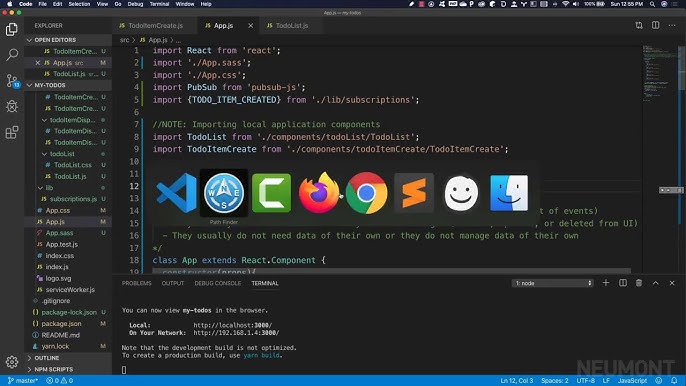From niche hobby to global phenomenon, competitive e-sports has undergone a meteoric rise, transforming digital arenas into sold-out stadiums and talented gamers into international celebrities. What was once a pastime for enthusiasts has exploded into a multi-billion dollar industry, complete with professional leagues, massive prize pools, corporate sponsorships, and a dedicated global fanbase that rivals traditional sports. This isn’t just about playing video games; it’s a complex ecosystem of media, technology, and commerce where fortunes are made and legacies are built. The scale of this business is staggering, driven by a digitally native generation that consumes content and entertainment in fundamentally new ways. Understanding the mechanics of this industry reveals a sophisticated business model built on viewership, engagement, and cutting-edge technology.
This article delves into the intricate world of professional e-sports, exploring the key pillars that make it a commercial powerhouse. We will dissect the ecosystem, from the players and teams to the publishers and tournament organizers. We will also examine the critical role of technology, not just in the games themselves, but in the platforms that deliver this spectacle to millions. Finally, we will explore the diverse revenue streams fueling its growth and consider the challenges and opportunities that lie ahead. Welcome to the big business of competitive e-sports.
The E-sports Ecosystem: A Multi-Layered Global Industry
The e-sports industry is not a monolith; it’s a dynamic ecosystem with multiple interdependent layers, each contributing to its overall value and growth. Understanding these components is key to appreciating the business’s complexity and scale.
Game Publishers: The Foundation
At the very core are the game publishers—companies like Riot Games (League of Legends), Valve Corporation (Dota 2, Counter-Strike 2), and Activision Blizzard (Overwatch, Call of Duty). They are the architects of the entire system. Unlike traditional sports, where the game itself is in the public domain (no one “owns” basketball), publishers own the intellectual property (IP) of their games. This gives them immense control over the competitive scene, allowing them to create and manage their own franchise leagues, set rules, and dictate the terms of engagement for players, teams, and broadcasters. Their success depends on maintaining a balanced, engaging game, which requires constant updates, patches, and rigorous Bug Fixing to ensure a fair competitive environment.
Teams and Players: The Stars of the Show
Much like traditional sports franchises, e-sports organizations are professional entities that scout, train, and manage rosters of elite players. Organizations like Team Liquid, TSM, and FaZe Clan are now global brands with merchandise lines, content creation arms, and high-value sponsorships. Players are the superstars, often commanding six- or seven-figure salaries, supplemented by prize money, streaming revenue, and personal endorsements. Their performance is paramount, and they rely on flawless game execution, making the technical stability of the game a non-negotiable requirement.
Leagues and Tournament Organizers
This layer includes both publisher-run leagues (like the League of Legends Championship Series – LCS) and third-party organizers (like ESL and BLAST). These entities are responsible for the production and execution of e-sports events, from online qualifiers to massive international tournaments held in arenas like the Staples Center or Madison Square Garden. They handle logistics, broadcasting, and prize pool distribution, creating the thrilling spectacles that attract millions of viewers. The technical production of these events is a massive undertaking, requiring flawless live-streaming capabilities and real-time data integration.
The Technology Powering the Spectacle: More Than Just a Game

E-sports is fundamentally a technology-driven industry. The seamless experience enjoyed by players and fans is the result of incredibly complex software and infrastructure operating behind the scenes. The process of Software Debugging is the unsung hero that keeps the entire machine running, from the game client to the global broadcast.
Game and Server Integrity
For a competitive game to be viable, it must be fair and stable. Game developers invest enormous resources into Testing and Debugging to eliminate exploits, glitches, and crashes. A single bug can alter the outcome of a multi-million dollar match. Developers employ a wide range of Debugging Techniques to ensure stability. For games with server-side logic written in Python, rigorous Python Debugging is essential to prevent issues with matchmaking or game state validation. When a critical bug appears, developers analyze Stack Traces and logs to pinpoint the root cause, often under immense pressure. This continuous cycle of development and refinement is a core part of Python Development and C++ development in the gaming world.
The backend infrastructure that supports millions of concurrent players is a marvel of engineering. Many real-time communication services, APIs, and data-processing pipelines are built on Node.js for its speed and scalability. Consequently, expertise in Node.js Debugging is a highly sought-after skill. When players experience lag or disconnections, backend engineers are busy performing Network Debugging and analyzing server performance to resolve the underlying Node.js Errors. This is a critical aspect of Backend Debugging that ensures a smooth player experience.
The Broadcasting and Viewing Experience
The fan experience is predominantly digital, delivered through streaming platforms like Twitch and YouTube. These platforms are sophisticated web applications that rely heavily on JavaScript. Ensuring a buffer-free, high-definition stream with interactive features requires constant Frontend Debugging. Developers use powerful Web Development Tools to tackle these challenges. For instance, JavaScript Debugging using Chrome DevTools is a daily reality for engineers working to optimize streaming performance. They use the Debug Console to inspect JavaScript Errors, analyze network requests, and profile rendering performance. This focus on Web Debugging and Browser Debugging is what allows millions of fans to watch a tournament simultaneously without issue.
Modern e-sports broadcasts often involve complex web-based overlays that display real-time stats, player information, and interactive polls. These are frequently built with frameworks like React or Vue, so skills in React Debugging or Vue Debugging are crucial. A failure in these overlays can detract from the viewing experience, making meticulous Code Debugging a priority. The APIs that feed these overlays with live data also need to be robust. Any issues require swift API Debugging to ensure data flows correctly from the game servers to the viewers’ screens.
DevOps and Production Environments
Deploying game patches and platform updates to a global audience is a complex DevOps challenge. E-sports companies leverage CI/CD pipelines to automate this process. However, when things go wrong, CI/CD Debugging is necessary to understand why a build failed or a deployment was unsuccessful. Many of these systems are containerized for consistency, making Docker Debugging and even Kubernetes Debugging essential skills for the infrastructure teams. Furthermore, diagnosing issues in a live environment, known as Production Debugging, is a high-stakes activity that requires specialized Debug Tools and robust Logging and Debugging practices. Tools for Error Tracking and Performance Monitoring are indispensable for maintaining service health and providing a seamless user experience.
Monetization: Following the Money in E-sports
The explosive revenue growth in e-sports is fueled by a diverse set of income streams that go far beyond simple game sales. The business model is built around capturing the value of its massive and highly engaged audience.

Media Rights and Advertising
Just like traditional sports, media rights are a cornerstone of e-sports revenue. Streaming platforms like Twitch and YouTube, along with traditional broadcasters like ESPN and Turner, pay enormous sums for the exclusive rights to broadcast major tournaments. In 2021, global e-sports media rights revenue was estimated to be over $200 million. This is complemented by advertising. Brands are eager to reach the coveted 18-34 demographic that dominates the e-sports audience. They advertise through commercials during broadcasts, on-screen banners, and sponsored content segments.
Sponsorships
Sponsorship is currently the largest revenue stream, projected to generate over $800 million in 2023. This includes deals at every level:
- League Sponsorships: Brands like Mercedes-Benz, Mastercard, and State Farm sponsor entire leagues, gaining naming rights and extensive brand integration.
- Team Sponsorships: Non-endemic brands (outside the gaming world) like BMW, Honda, and Red Bull sponsor teams, with logos appearing on jerseys and social media.
- Player Sponsorships: Top players secure lucrative individual endorsements from hardware companies (Logitech, Razer) and lifestyle brands.
These partnerships are a testament to the mainstream appeal and marketing power of the e-sports audience.
Merchandise and In-Game Purchases

Teams sell branded merchandise, from jerseys and hats to gaming chairs and mousepads, creating a direct revenue line from their fanbase. Simultaneously, game publishers leverage their IP through in-game purchases. They sell cosmetic items, such as character skins and weapon designs, often themed around e-sports teams or events. A portion of the revenue from these sales frequently contributes to tournament prize pools, creating a virtuous cycle where fans can directly support the competitive scene.
Challenges, Best Practices, and the Road Ahead
Despite its rapid growth, the e-sports industry faces several challenges. Player burnout and mental health are significant concerns due to grueling practice schedules and immense pressure. The industry is also working to establish more standardized governance and regulation to ensure competitive integrity and protect players. From a technical standpoint, one of the key Debugging Best Practices is establishing a proactive approach to quality assurance. Rather than just reacting to bugs, a combination of Unit Test Debugging, Integration Debugging, and Debug Automation helps catch issues before they reach production.
The future looks incredibly bright. The continued growth of Mobile Debugging reflects the rise of mobile e-sports, which is bringing competitive gaming to billions of new players, particularly in markets like Southeast Asia and Latin America. Technologies like VR and AR promise to create even more immersive viewing experiences. The integration of e-sports into mainstream culture is accelerating, with potential inclusion in events like the Olympic Games being seriously discussed.
For developers and engineers, the field offers unique challenges and opportunities. Mastering Full Stack Debugging—from the game engine to the cloud infrastructure and the frontend client—is essential. The complexity of modern e-sports platforms requires a deep understanding of Application Debugging and System Debugging, using advanced Profiling Tools and Code Analysis techniques to ensure peak performance.
Conclusion
Competitive e-sports is far more than a fleeting trend; it is a robust, technologically advanced, and commercially powerful industry that has cemented its place in the global entertainment landscape. Its ecosystem is a complex interplay of game publishers, professional teams, broadcast platforms, and major brand sponsors, all built upon a sophisticated technological foundation. The silent, critical work of software development and debugging—from JavaScript Development on the frontend to Python Development on the backend—is what makes the entire spectacle possible. As viewership continues to grow and monetization streams become even more sophisticated, the business of e-sports is poised to reach even greater heights, proving that the digital arena is the new frontier of competitive entertainment.













